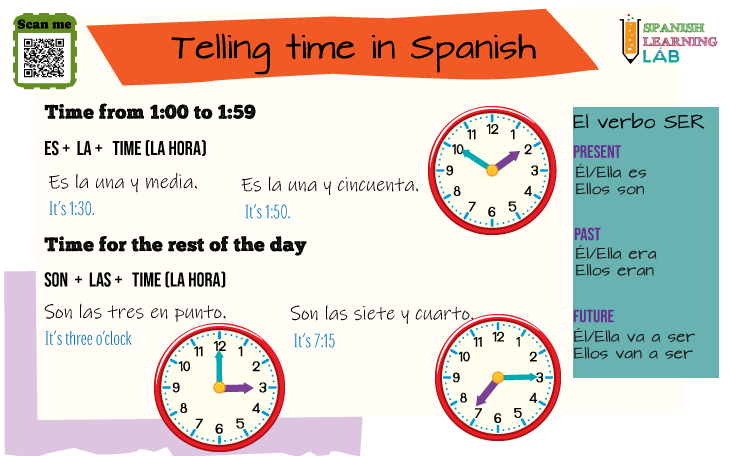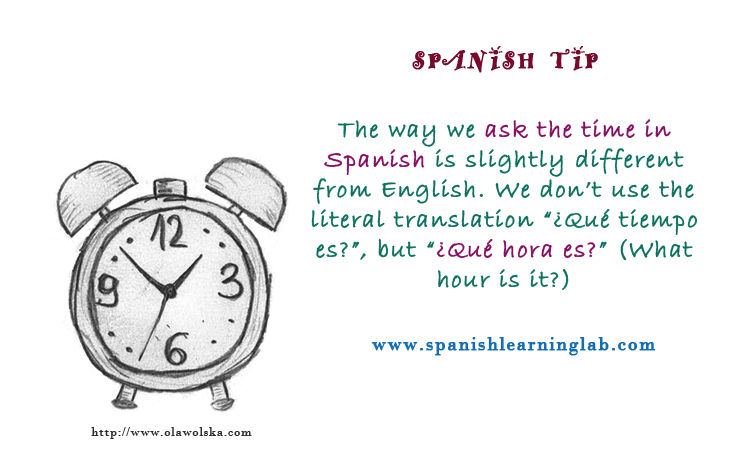
Asking and telling time in Spanish may very useful in everyday conversations. This lesson will teach you the rules behind the most important questions to ask time in Spanish and the sentence structure to tell time in Spanish properly. We will also cover some expressions that are often used when telling time in Spanish. Hopefully, you will find the audio examples and explanations in this lesson very useful. Let’s start…
In order to tell time in Spanish in the present tense, we will always use one of the two forms of the irregular verb SER (to be): ES and SON. The form ES will only be needed for telling the time between 1:00 to 1:59, whereas SON will be used for the rest of the day. With that said, if you meant to say “It is 1:30”, then you would have to tell time using ES like this: “Es la una y media”. On the other hand, when telling time in Spanish after 2:00, like “It is 2:30”, you would have to use SON like this: “Son las dos y treinta”. Most of the time, these type of sentences will begin with the verb SER plus a definite article and then the time, for example:

For telling time in Spanish in the past tense, we have to use the past forms of both ES and SON, that is “ERA” and “ERAN”, for example: “Era la una y cuarenta” (It was 1:40) and “Eran las 7 de la noche”. For talking about future time, we tend to use the phrase “Va(n) a ser + time in Spanish” (It is going to be…) this way: “Va a ser la 1:30” or “Van a ser las doce”.
The most common and easiest way for asking time in Spanish is “¿Qué hora es?” This question means “What time is it?” in Spanish, but it is not a literal translation as we use the word HORA instead of TIEMPO. We may ask differently depending on the formality of the conversation. A more formal way for asking time in Spanish would be by adding the expression DISCULPE or DISCULPA as in “Disculpe, ¿Qué hora es?“. This way, ff you need to ask time in Spanish, especially to a stranger, it is better to use a polite question like Disculpe ¿me puede decir la hora? or Disculpe ¿qué hora es?

Other ways for asking time in Spanish include “¿Qué tiempo/hora tienes?” (informal) and ¿Me puede decir la hora? (Can you tell me the time?). In the examples below, you will notice that the answers will use the verb SER as “ES” and “SON” to tell time. One of the examples shows that for time expressions like “It’s 10 to 12”, we must use the verb “FALTAR” (to lack) instead of “SER”. With that said, the correct sentence would be “Faltan 10 para las 12” instead of “Son las 10 para 12” (wrong literal translation). Pay attention to these examples and listen to their pronunciation: